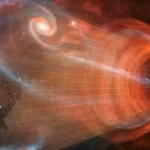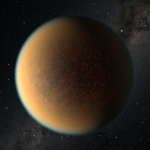Key Takeaways:
- Wormholes, theoretical bridges in spacetime, remain a tantalizing concept rooted in Einstein’s theory but have yet to be empirically detected.
- Recent studies propose innovative methods to potentially identify wormholes, including observing gamma ray collisions in bright galaxies, suggesting distinctions between black holes and traversable wormholes.
- The existence of wormholes could challenge traditional concepts, as some suggest their presence at the center of galaxies like the Milky Way, possibly affecting nearby stellar motions.
- Quantum physics intertwines with the idea of wormholes, linking to quantum teleportation and the formation of these spacetime anomalies from quantum particle activity in the early universe.
- The theoretical existence of wormholes connects fundamental physics theories and might provide insights into cosmic mysteries, potentially expanding our understanding of the universe’s complexity.
The fabric of space and time conceals mysteries that continue to intrigue scientists worldwide. Among these enigmatic concepts, wormholes, theoretical shortcuts in spacetime, remain elusive but fascinating. Although stemming from Einstein’s theory of general relativity, their empirical verification has remained elusive, much like the earlier detection of black holes.
These cosmic anomalies represent regions where gravity profoundly bends spacetime, illustrating the profound interplay between matter and the fabric of the universe. Black holes, a product of such extreme curvature, have only recently been unequivocally observed. However, wormholes, theoretical passages connecting disparate points in spacetime, continue to exist within the realms of imagination.
Recent months have witnessed a surge in studies proposing innovative pathways to potentially uncover these elusive phenomena. These explorations delve into the identification and differentiation of wormholes from established cosmic entities like black holes. In doing so, they shed light on their potential presence at the heart of some brilliantly radiant galaxies.
The theoretical distinction between black holes and traversable wormholes, initially deemed indistinguishable from an external standpoint, has intrigued researchers. Surprisingly, these distinctions might be observable through the radiation emanating from these cosmic anomalies. Gamma ray emissions, theorized to result from collisions between matter entering and exiting a wormhole, could provide a defining characteristic. While black holes emit fewer gamma rays in focused jets, wormholes might disperse radiation within a vast sphere.
However, the feasibility of traversing these theorized wormholes remains daunting. Their proximity to the tumultuous center of active galaxies promises temperatures capable of incinerating anything in their vicinity. Nevertheless, speculation persists that wormholes distanced from galactic cores might offer more hospitable passageways.
Moreover, recent conjectures have challenged established beliefs, suggesting that the gravitational effects observed near the heart of galaxies might not solely stem from supermassive black holes. Instead, these effects might hint at the presence of wormholes, adding a peculiar gravitational influence on nearby stellar trajectories.
Coincidentally, unexplained celestial phenomena have further fueled speculations about potential wormhole existence. Odd radio circles, colossal and lacking associations with visible objects, have perplexed scientists, prompting them to consider wormholes as a plausible cause.

The allure of wormholes extends beyond mere curiosity, delving into realms of quantum physics and the intricate workings of the universe’s fabric.
Quantum mechanics’ propensity for particles to emerge fleetingly from vacuous space has led physicists to ponder whether similar quantum fluctuations could birth these cosmic conduits. The tantalizing connection between quantum teleportation and the behavior of black holes interconnected via wormholes further deepens the intrigue, potentially resolving long-standing quantum information paradoxes.
The convergence of wormholes with pivotal theories in physics ignites hopes of unraveling cosmic enigmas, potentially rewriting our comprehension of the universe. While these theoretical constructs remain elusive, their hypothetical existence might serve as gateways to unlocking profound cosmic mysteries, expanding our perception of the cosmos’ intricacies.


